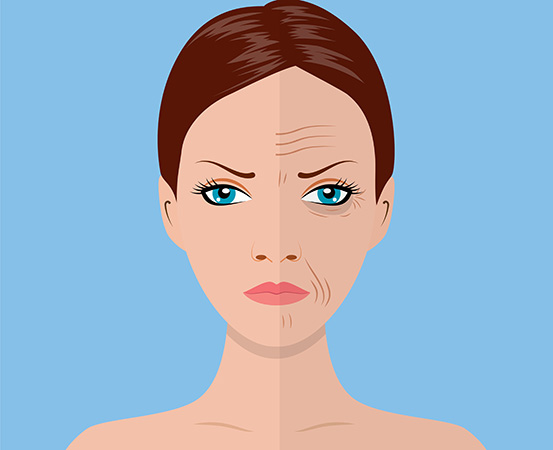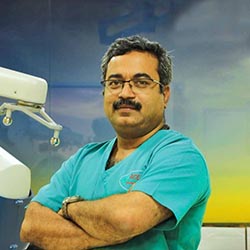
Imagine the skin on one side of your face starts losing its colour and its youthfulness while the other side looks absolutely normal. This is a reality for some children even before their youth begins. The condition is called en coup de sabre (a group of medical disorders affecting the face, scalp and sometimes one side of the body).
En coup de sabre is a kind of linear scleroderma (a progressive loss of subcutaneous fat with pigment changes in the skin). Mostly seen in the young, it is also known as progressive hemifacial atrophy or Parry Romberg Syndrome. Though it commonly starts in first decade of life, late susceptibility to this disorder (presenting in the late 40s or 50s) is not unknown.
Initially, one side of the face shrinks — and largely goes unnoticed — but most people start observing the difference after six months. Hyperpigmentation of the skin appears quite some time after the disease starts showing its ill effects, including thinning of the skin and loss of fat below the skin.
In most cases the child would have started suffering the disorder around the age of nine or ten. It is only after the disease has progressed until the age of 14 — when the face growth gets completed — that doctors think of intervention or procedures to reconstruct the face.

A child was brought to our hospital recently with the skin on one side of his face partially hyperpigmented. The mother complained that one side of her child’s face was just skin and bone. The fat and muscles below the skin were lost — and this had started from the age of five. Things worsened despite the parents’ efforts to get the child treated by experts from across the city. After visiting various hospitals, trying steroids and other medical creams that were prescribed, the parents had brought the child to us with just the skin and bone left in the affected region of the face.
When the child tested normal for all tests, it raised a strong suspicion that it is a case of scleroderma. Expert consultation confirmed finally that it was a case of en coup de sabre.
Since the real cause of the disease has not yet been established — it is probably multifactorial with genetic and autoimmune components — there is no known test to diagnose this yet. There is no holy grail in treatment to decrease or manage this disorder. But neither can anyone doubt that a child is suffering this disease after its manifestations become visible on the face.
The respite we have is that this is a self-limiting disorder: it generally stops progressing once the child reaches the age of 16 to 18. That is the time when reconstructive surgery is advised.
An intervention of plastic surgery can help the child recover from the damage this disorder causes to the face. Periodic consultations help experts to understand if there is a need for intervention.
We might not be able to provide a cure each time since the adversary here is stronger than us and we are yet to overcome it. But, to use the words of the 19th century American physician Edward Livingston Trudeau, we try “to cure sometimes, to relieve often, to comfort always”.











